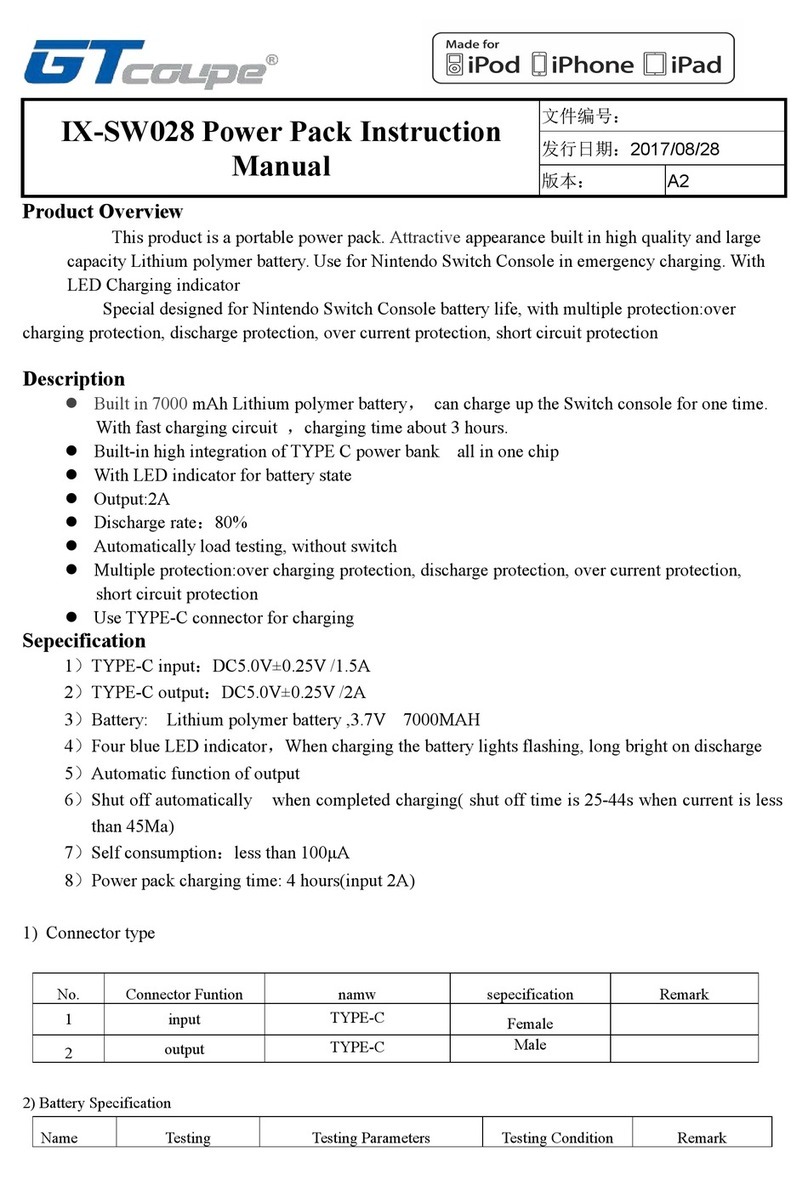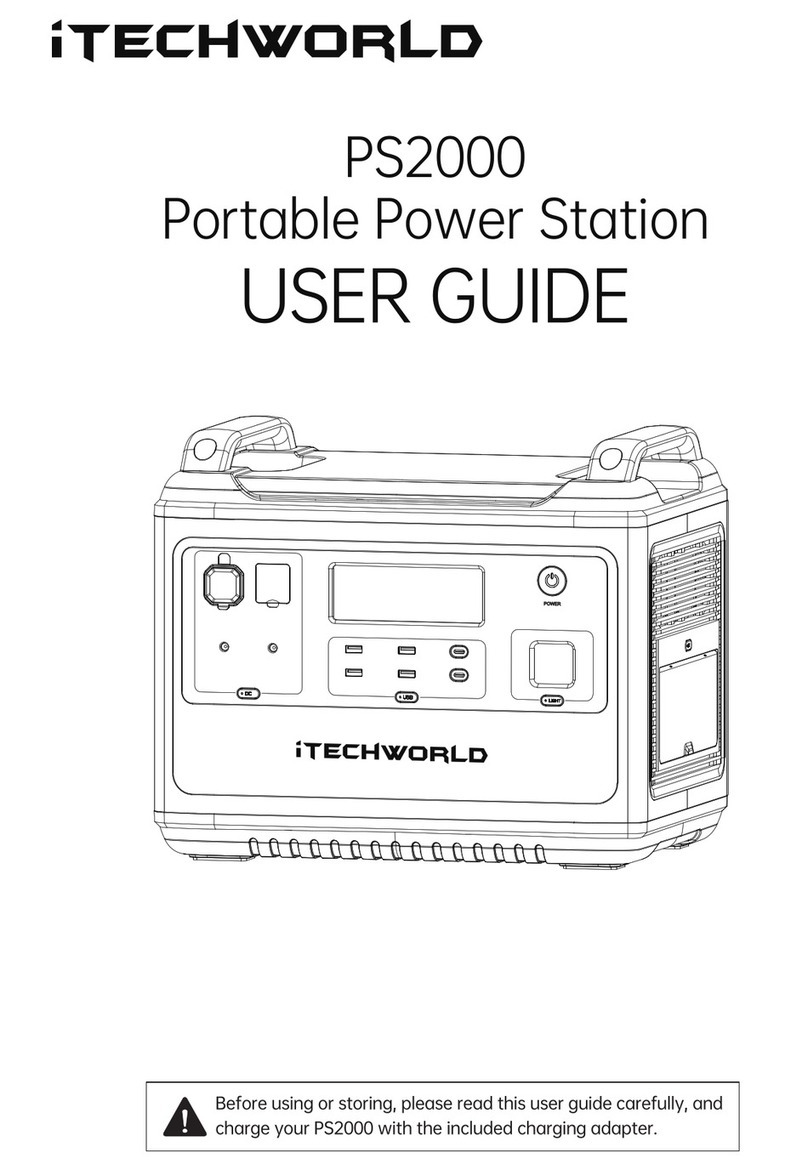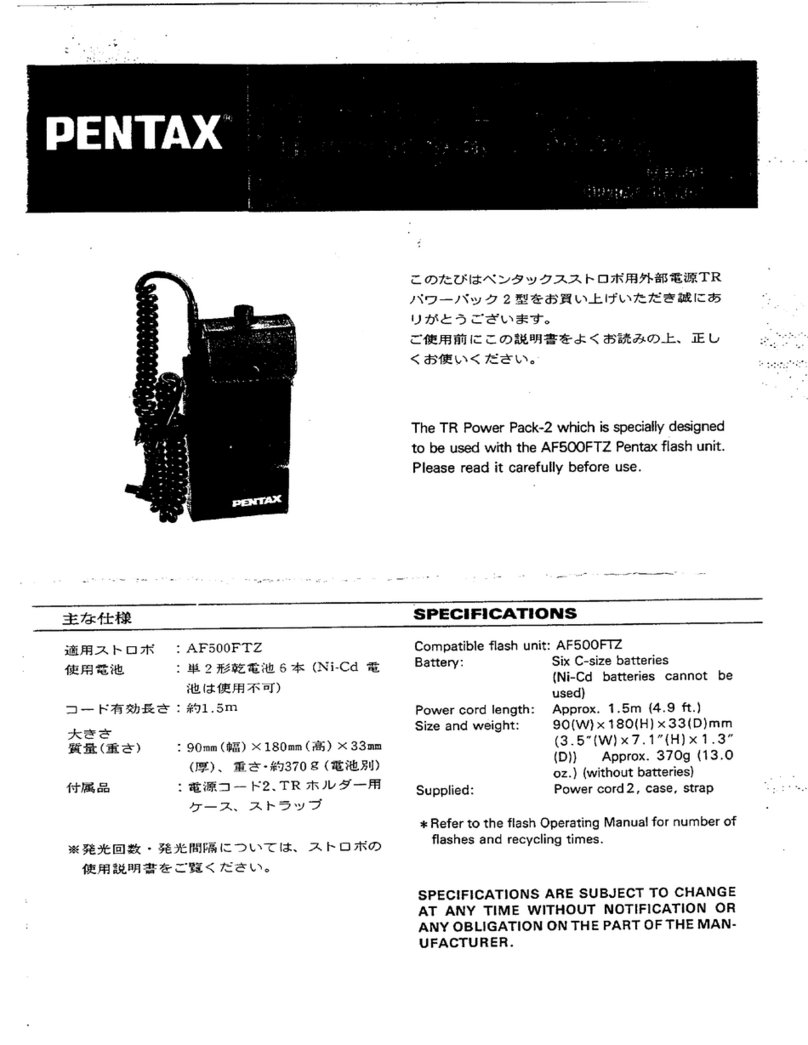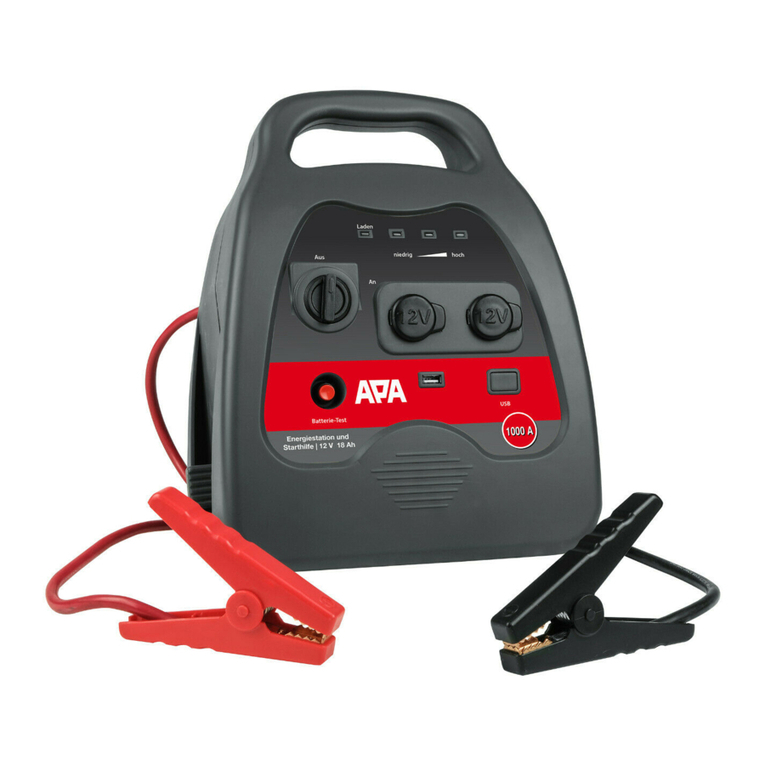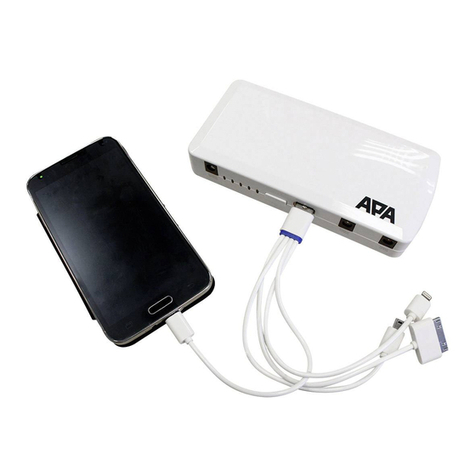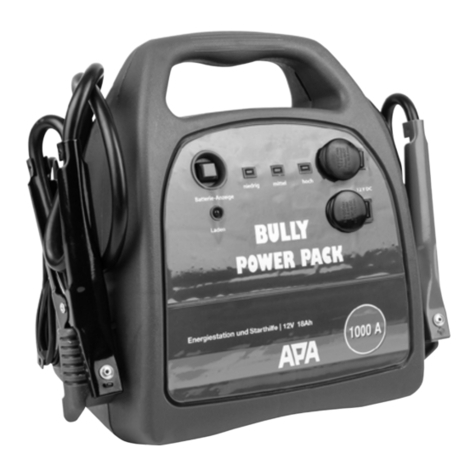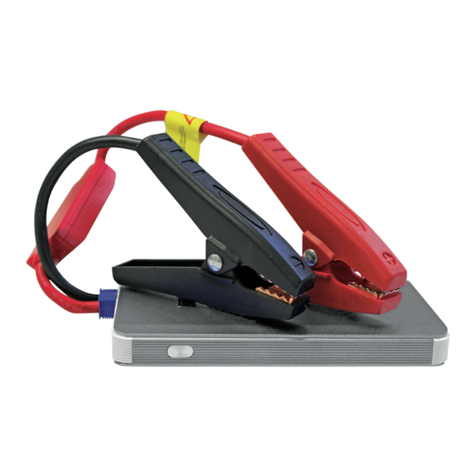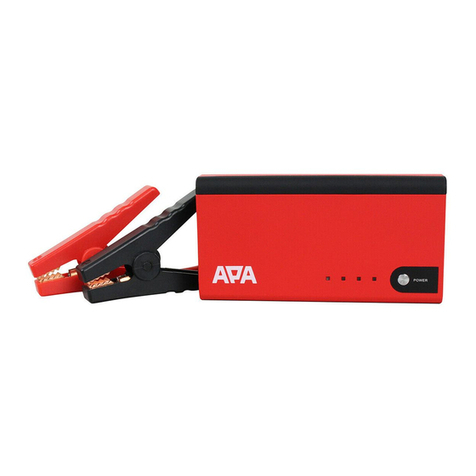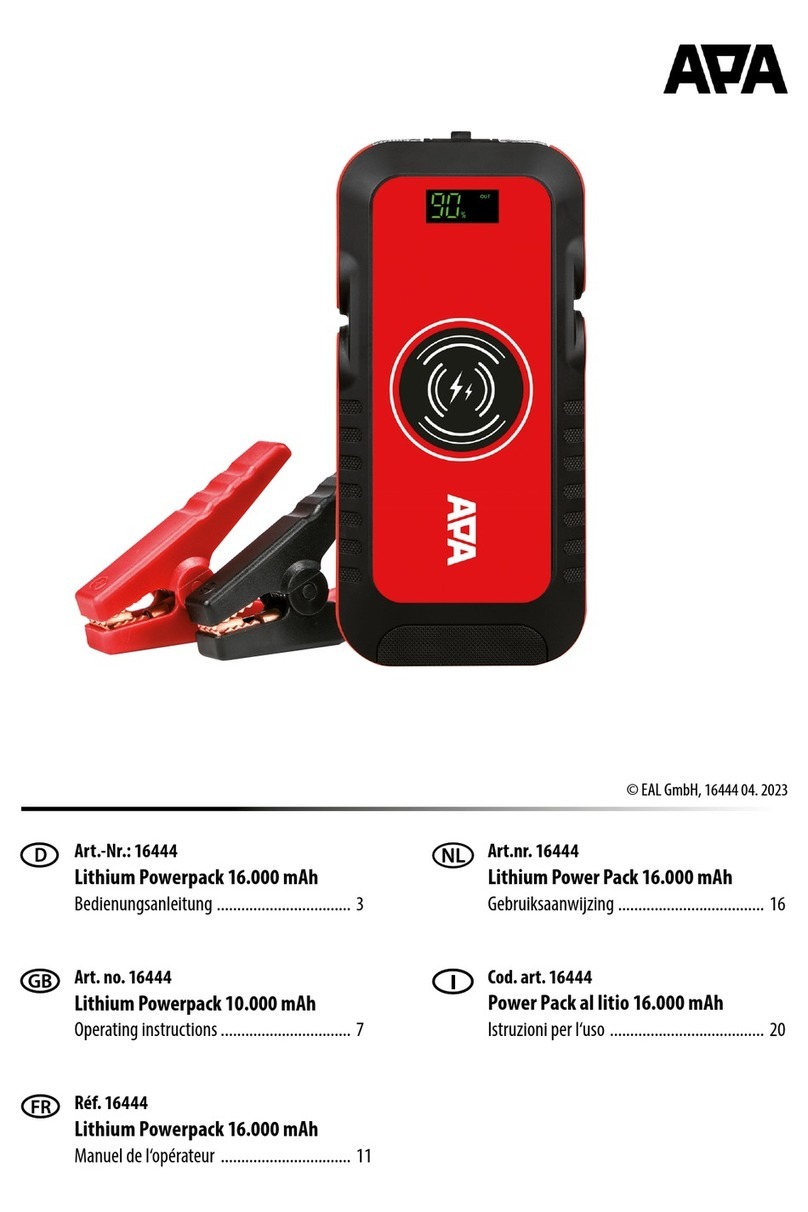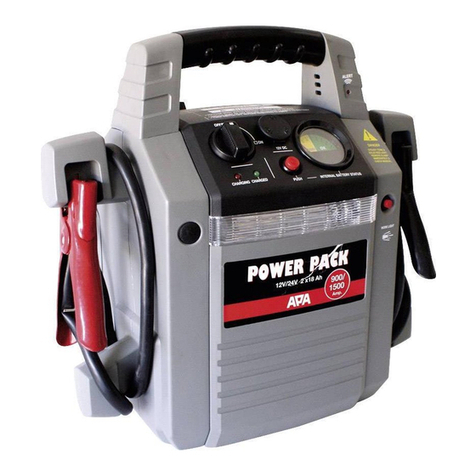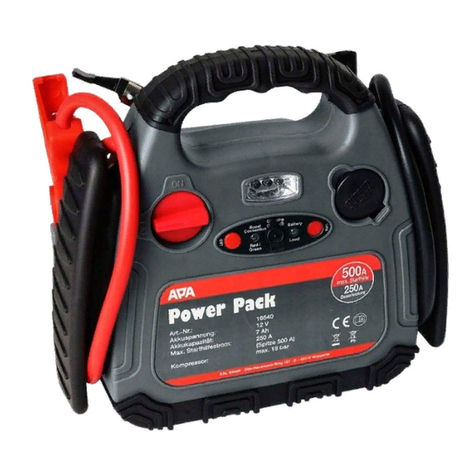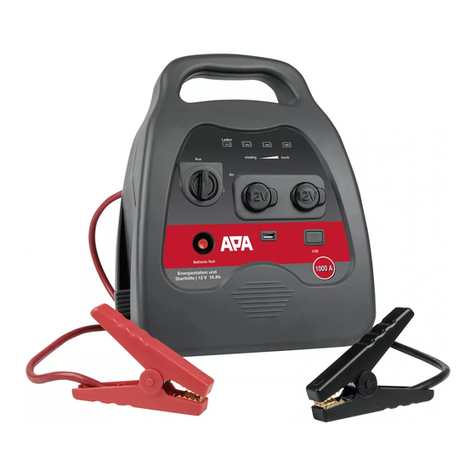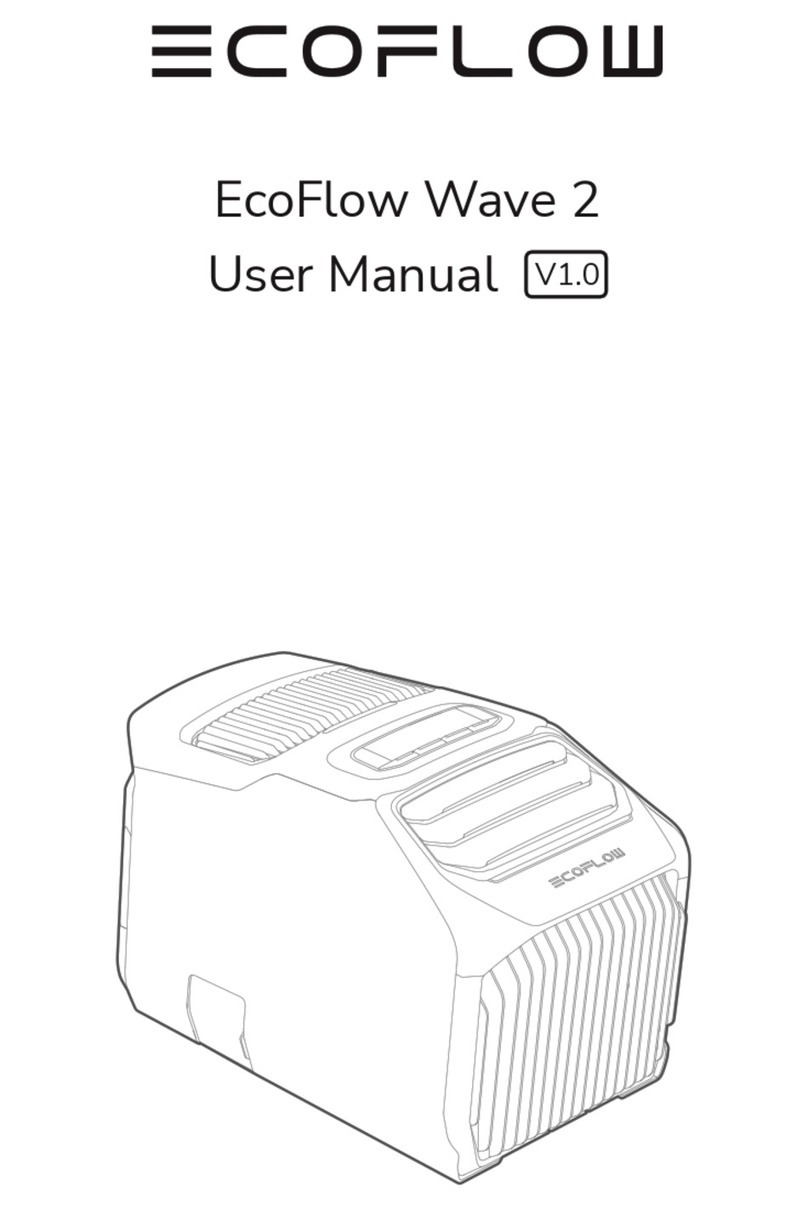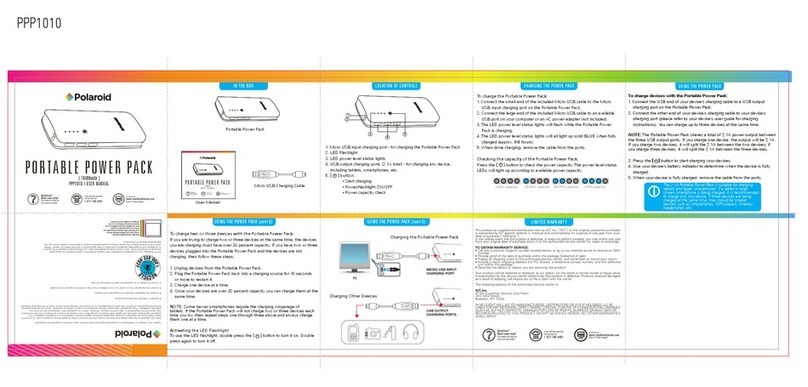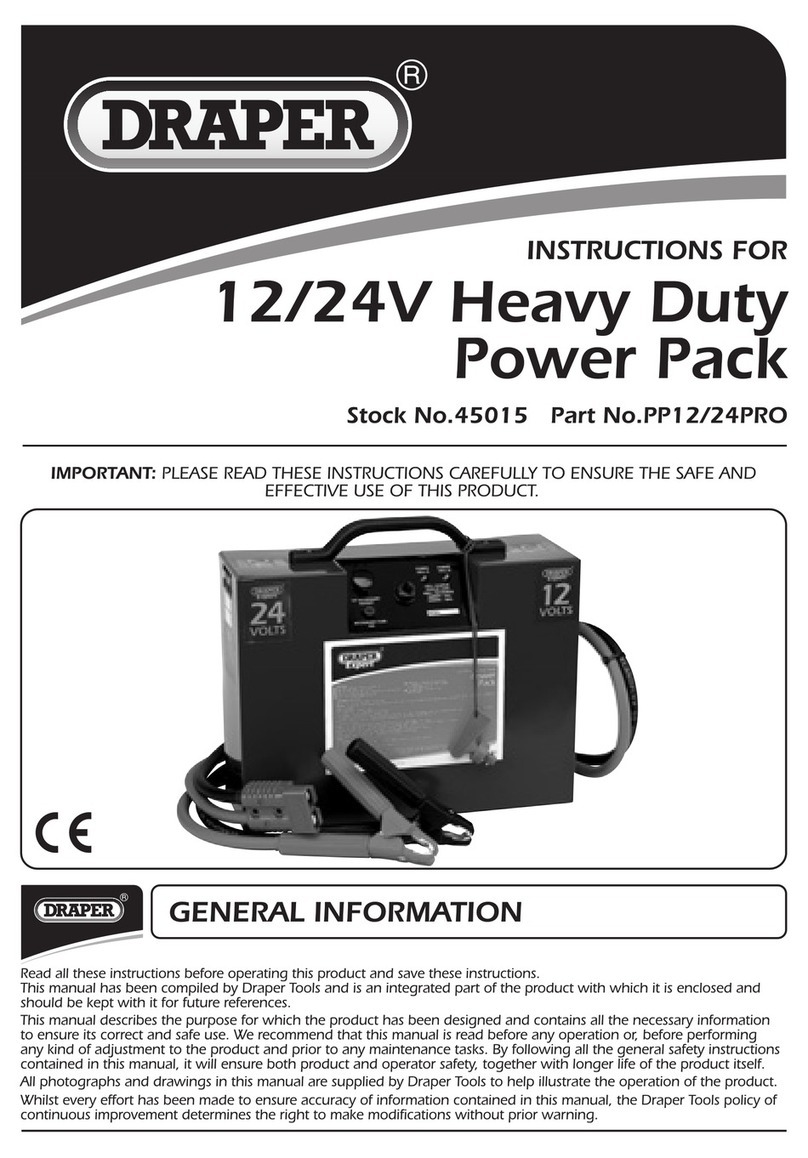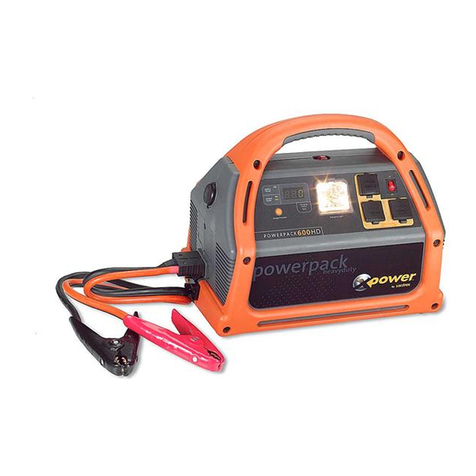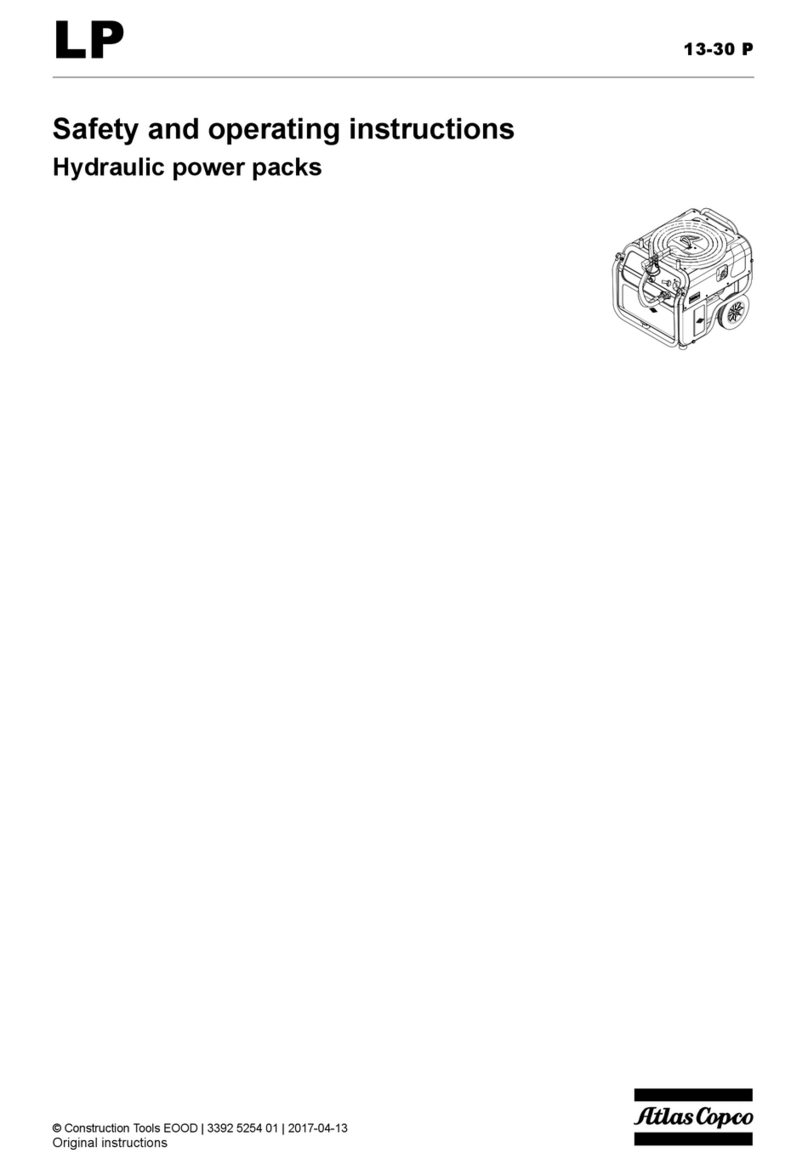
8
Dimensions
L x B x H [cm] 7.9 x 29.2 x 23.3
Jump lead length, [cm] approx. 54
Weight, [kg] 2.690
Power pack
Battery type lithium iron phosphate
Operating voltage, [V] 12/24
Battery capacity, [mAh] 35000 (8 x 4375)
Energie, [Wh] 112
Jump-start electricity 12/24V, [A] 600/300
max. current spike 12/24V, [A] 1200/600
vehicle socket 12V DC, 10A
USB output 5V DC, 1 x 1A, 1 x 2A
LED light 3W/250lm, continuous light/ashing/SOS
Charger
Input 100-240V AC, 50/60 Hz
Output 15V DC, 1A
• The warning triangle sign indicates all instructions which are important for safety. Always follow these,
otherwise you could injure yourself or damage the device.
• Children may not play with the device.
• Cleaning and user maintenance may not be carried out by children without supervision.
• Do not leave packaging material carelessly lying around.This may become a dangerous toy for a child.
• Only use this product for its intended purpose.
• Do not manipulate or disassemble the device.
• For your own safety, only use accessories or spare parts that are stated in these instructions, or that are
recommended by the manufacturer.
• Before trying to jump-start a motor vehicle, read the manual for your vehicle to nd out how to jump-start it.
• When using lead batteries, always wear protective goggles and clothing.
• Lead batteries contain aggressive, corrosive acids. Prevent skin and eyes from coming into contact with the
lead battery uids. Never dismantle lead batteries. Wash aected skin thoroughly using soap and water. If
acid has entered an eye, rinse immediately for at least 10 minutes under clean, running, lukewarm water. Then
immediately consult a doctor.
• If your clothing has acid on it, rinse immediately with plenty of soap and water.
• Never wear rings, necklaces, watches or similar when handling batteries or chargers.The short-circuiting of the
battery contacts brings a risk of burns and explosion.
• The power pack is only designed as a starting aid for a vehicle that has a battery of its own. The power pack
cannot replace the vehicle battery.
• Do not use the power pack while it is charging.
• Do not attempt to remove and replace the battery pack of the power pack. If the battery comes to the end of its
useful life, dispose of the entire battery in accordance with local policy.
3. Specications
4. Safety precautions
1 x Lithium power pack 1 x Plug-in charger 1x Instructions for use
2. Scope of delivery



